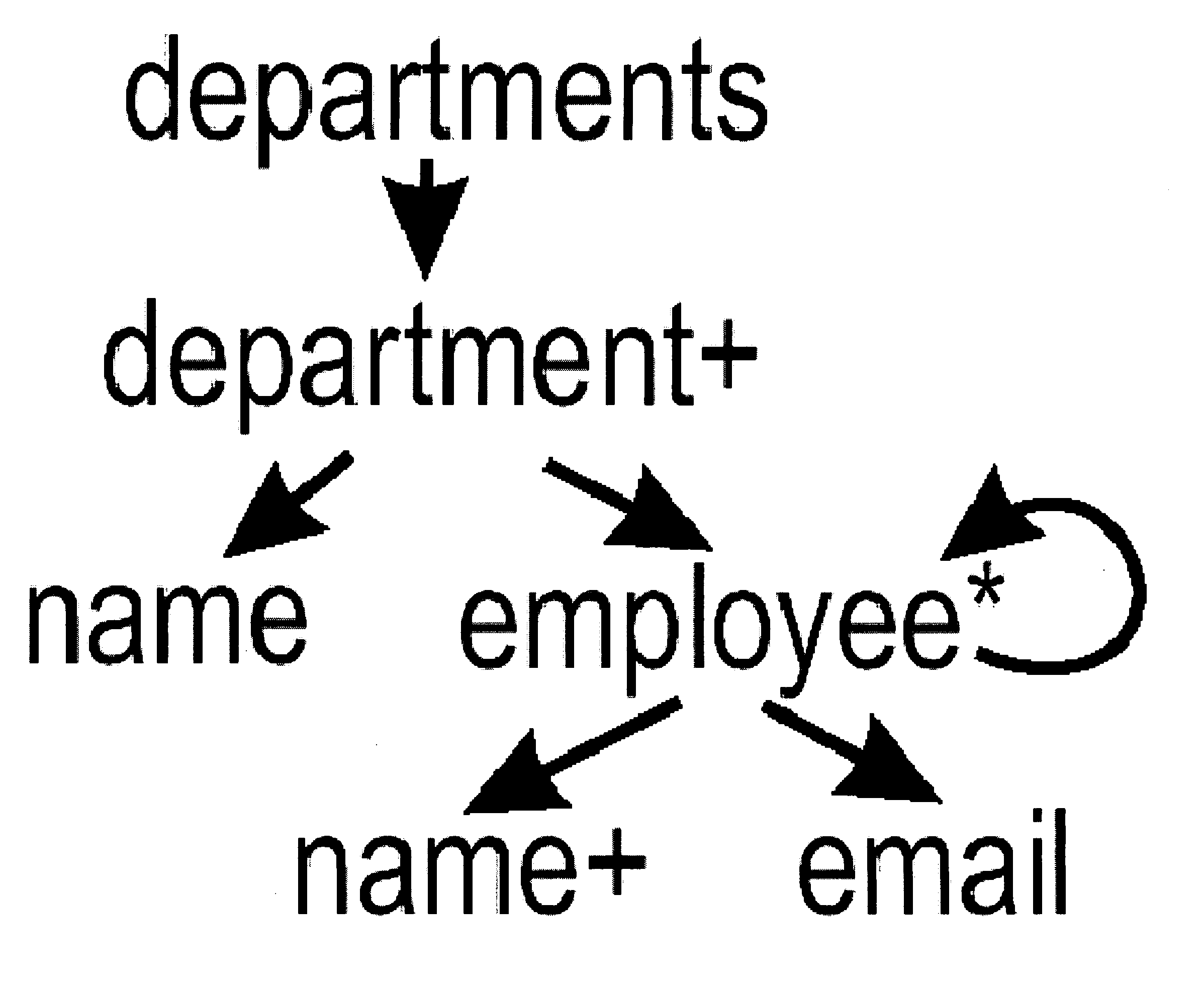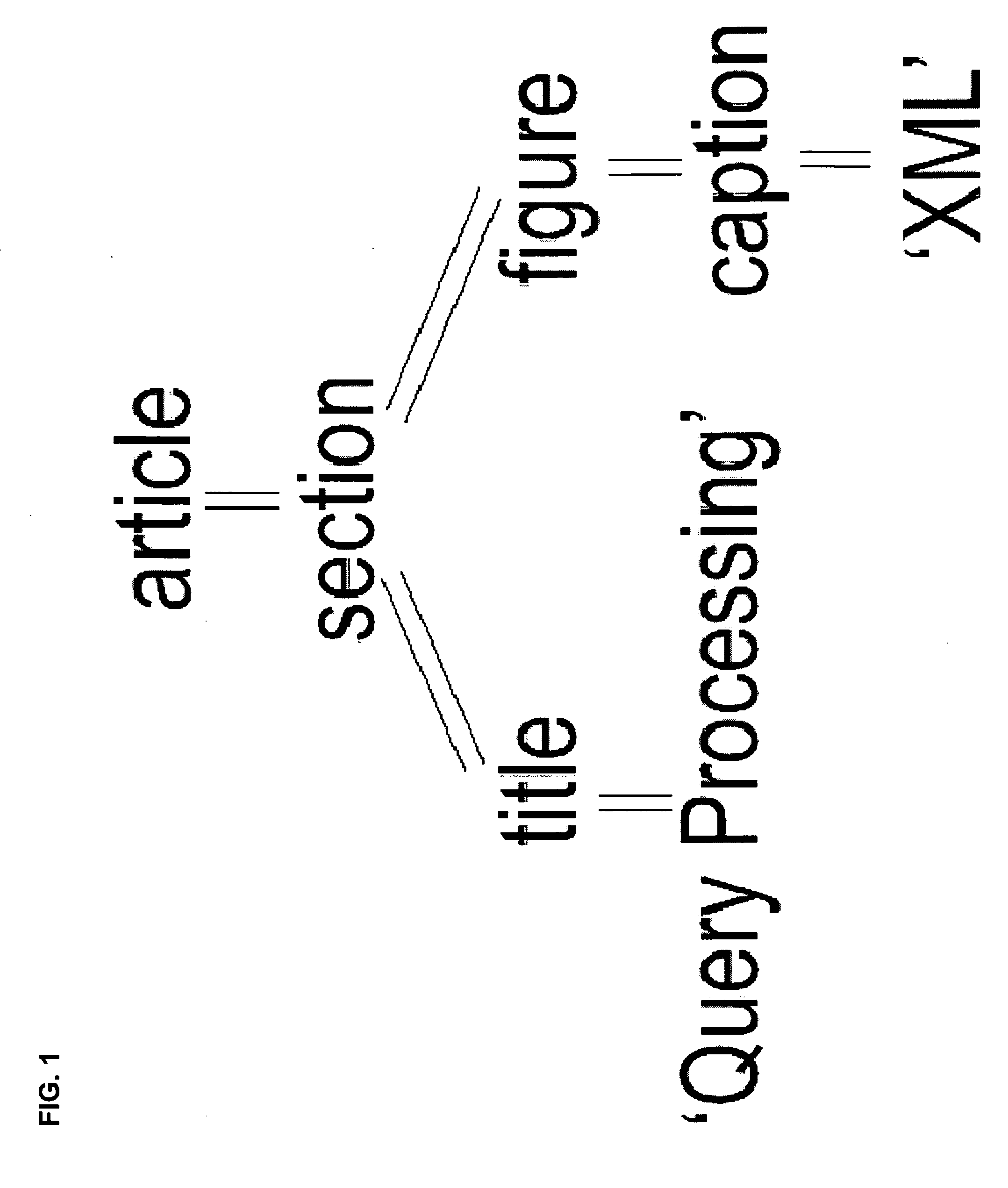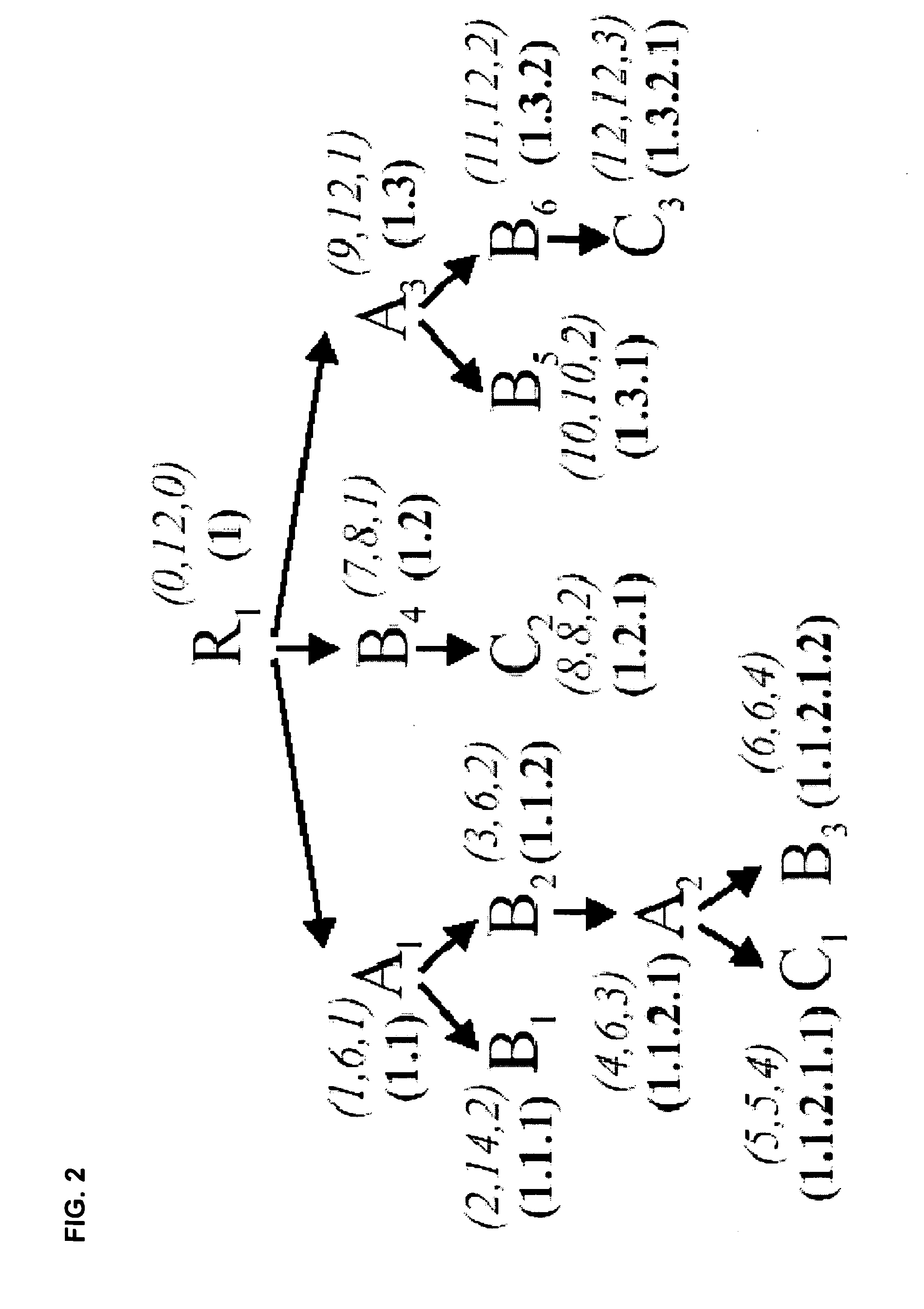Virtual cursors for XML joins
a virtual cursor and join technology, applied in the field of xml query processing, can solve the problems of not being able to immediately produce the positions of all ancestors given a single element, and the difficulty of processing xml queries, so as to improve the performance of structural joins, increase the efficiency of join processing, and improve the effect of query processing efficiency
- Summary
- Abstract
- Description
- Claims
- Application Information
AI Technical Summary
Benefits of technology
Problems solved by technology
Method used
Image
Examples
example 1
[0092] Consider the dataset in FIG. 4, and the call CA→VirtualFwdToAnc(B1). Before VirtualFwdToAnc is called for the first time in a query, pcur is initialized to a special position POS_ZERO, which is defined to be less than all other positions in the database.
[0093] When the function is called, GetAncestors(B1) will return the set {Root, AY, A99}. Say B1 has path ID x, representing the path pattern “Root-A-A-B”. In this case, GetLevels(x, “A”) will return the set {2, 3}, since only the ancestors at depths 2 and 3 have label A. When i=1 (AncArray[i]=Root) the first condition holds (Root >pcur) but the second condition does not (i∉LevelArray). When i=2, both conditions hold. Thus, pcur is set to AY, the correct first ancestor of element B1.
[0094] Now let us consider the VirtualAdvance( ) algorithm, which is simply an invocation of VirtualFwdToAnc(pdesc). Intuitively, this algorithm results in incorrect behavior. For example, say after the first call to CA→VirtualFwdToAnc(B1), we ca...
PUM
 Login to View More
Login to View More Abstract
Description
Claims
Application Information
 Login to View More
Login to View More - R&D
- Intellectual Property
- Life Sciences
- Materials
- Tech Scout
- Unparalleled Data Quality
- Higher Quality Content
- 60% Fewer Hallucinations
Browse by: Latest US Patents, China's latest patents, Technical Efficacy Thesaurus, Application Domain, Technology Topic, Popular Technical Reports.
© 2025 PatSnap. All rights reserved.Legal|Privacy policy|Modern Slavery Act Transparency Statement|Sitemap|About US| Contact US: help@patsnap.com



